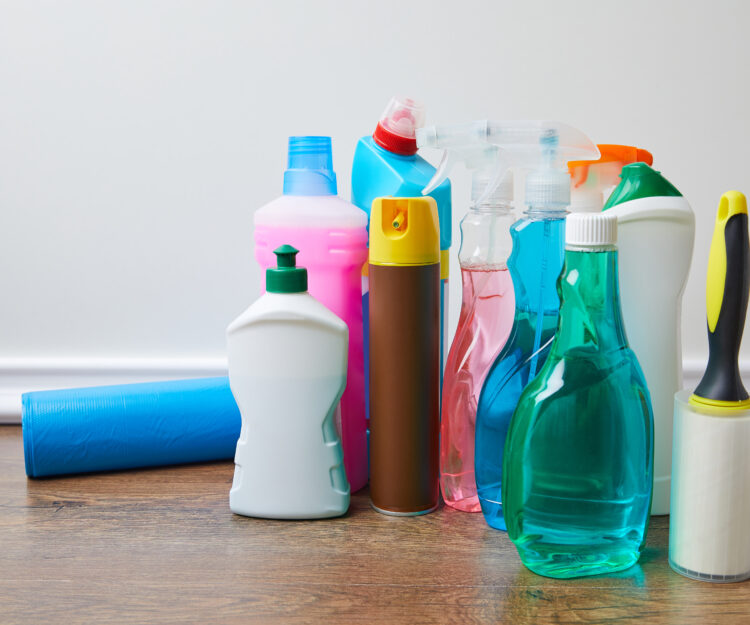We’ve all heard about CBD for pain relief, anti-inflammatory, and even as a sleep aid.
But in recent years, we’ve seen top beauty brands work overtime to add CBD-infused oils, bath soaks, skin care products, and hair products—just to name a few—to their product lines.
As CBD beauty products grow in popularity, many brands want to know if all this “buzz” is worth the time and effort of adding it to their product lines:
● Is it really effective?
● Where is it providing the most impact?
● How can I implement it into my current line of products?
Let’s look into how CBD beauty products work, and which ones you should offer to benefit your consumers.
What can CBD do for your consumers’ skin?
We already know that CBD is an incredibly effective ingredient that provides natural pain relief, reduces anxiety, and is an anti-inflammatory alternative to addictive pharmaceuticals.
But what does all this have to do with beauty products? To answer that question, we need to talk about the endocannabinoid system (or ECS).
If that sounds like a mouthful, don’t worry. It’s less complicated than you might think.
Basically, the ECS is the intricate network of enzymes, lipids, and receptors that most mammals possess. The ECS system is responsible for achieving homeostasis in the body.
In other words, it helps keep us balanced.
The ECS system is responsible for a wide variety of skin conditions such as acne, eczema, and psoriasis. Maintaining a healthy ECS system and balanced homeostasis is key to boosting your skin’s overall health.
Some specific benefits include:
-
● Hydrates overly dry skin
● Reduces inflammation (swelling, pain, and redness)
● Prevents future acne breakouts
● Treats irritation from skin conditions such as psoriasis and eczema
● Regulates overproduction of sebum (excessive oil)
● Works to reduce signs of aging
As the body of research supporting these claims expands, we’ll almost certainly see an inevitable increase in cannabinoid use in skin care products.
How to ensure quality CBD in your beauty products
Reputable brands want to know that their product meets consumer expectations. This is why proper manufacturing, mixing, and labeling is critical for anyone offering CBD-based products.
Here are three factors to help you make sure that you’re always providing consumers with quality CBD in your products.
1. Type
Plainly list and label the type of CBD within a product, making it clear and concise for consumers to understand. This demonstrates your willingness to be transparent, and consumers can feel confident that your beauty product “does what it says on the tin.”
There are three types of CBD types to choose from:
- Full-spectrum includes all parts of the cannabis plant. Contain less than <0.3% THC
- Broad-spectrum contains most of the cannabis plant compounds containing trace amounts of THC
- Isolates only contain CBD, with no other cannabinoids or THC
2. Potency
Listing potency within CBD products help the consumer choose a product that works for their body’s chemistry and tolerance level. This is important, as just 100mg of CBD within a product can provide soothing and calming benefits while higher levels of 300mg may work well for harsh recovery-based needs.
3. Sourcing
Validate your product by offering the sourcing information directly. That way, consumers can know exactly where it was grown and have no doubts about its origin. This is a good best practice not only for your CBD and cannabinoids, but all ingredients.
4 best types of CBD beauty products
Different CBD beauty products provide different benefits to the consumer, depending on how the cannabinoid enhances the based products. That’s why it’s so important to understand what conditions your customers are dealing with, and how your product can help address those conditions.
Here are the four best types of CBD beauty products to consider adding to your product line.
1. Moisturizers
Best product options: Thicker, dense face creams that are full spectrum CBD preferably open jar packaging.
Key ingredients: Pair CBD with Shea Butter (rich in oleic acid to stabilize from oxidation), Cupuacu Seed Butter (high capacity for water retention), or Murumuru Seed Butter (high in myristic acids).
Why people want it: CBD helps establish balance and homeostasis for your skin. Regular use will help consumers see the best result. By combining CBD with other natural ingredients, you’re providing a product free of parabens, dyes, and sulfates.
2. Skin treatment
Best product options: Face masks and dense creams offer high inflammatory aspects and calming relief.
Key ingredients: Pair with Babassu Seed Oil (cooling emollient effects) Camphor Oil (anti-inflammatory and calming) and Eucalyptus Oil (reduce pain and anti-inflammatory)
Why people want it: Products containing 750mg of just CBD can fight skin issues like psoriasis. Additionally, the overall soothing effects of CBD, with these added ingredients, soften and smooth the skin, aiding in the treatment of eczema.
3. Anti-aging
Best product options: Serums or night creams that sink right into the skin help relax the skin and provide customers with that youthful vigor.
Key ingredients: Pair with Butyrospermum Parkii Shea Butter (triterpene content is highly anti-inflammatory)and Monoi Flower Extract (used throughout history for its anti-age benefits)
Why people want it: Because CBD is loaded with antioxidants, it can potentially rejuvenate the skin and keep it youthful.
4. Breakout prevention
Best product options: Light and non-greasy serums that avoid clogging the pores, unlike heavy moisturizers or cleansers.
Key ingredients: Paired with Camphor Oil (inflammation reducer) Tamanu Seed Oil (which contains lactone a natural antibiotic) or Rosehip Seed Oil (add benefit)
Why people want it: Consumers don’t want their pores clogged by thick moisturizer, which can lead to further breakouts. Help them get ahead of the game with cleansers that use 150 mg of CBD to cleanse the skin preventing further breakouts.
Final thoughts on CBD beauty products
By providing products that consumers are increasingly demanding, adding CBD to your skincare beauty line could be the next big step in your brand development.
The potential is limitless: balms, masks, and moisturizers (to name a few). Before you start, however, you need to make sure you’re offering the best products.
We provided some tips on how to do this, but there’s no substitute for a solid white-label partner who can do the heavy lifting for you. Put your mind at ease that the product you are offering is backed by proper sourcing, labeling, and high-quality potency, following FDA guidelines and evolving regulations.








